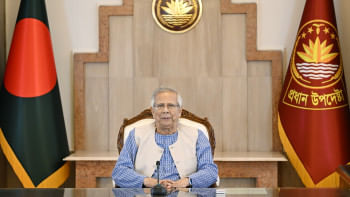The significance of two-way communication

In today's fast-paced business landscape, elective communication stands as the linchpin of success. Many businesses in Bangladesh believe that communication means advertising campaigns, promoting products, and making stakeholders and public aware of the organisation's message. But does this truly define communication?
As a student pursuing a master's degree in strategic communication, I have come to see communication as more than a mere transmission of information. The most important objective of communication is exchanging ideas, views, and information in a two-way transactional process to achieve shared meaning. Simply put, communication is not a one- way street: it is a conversation where thoughts, opinion, and information flow freely, crafting a shared understanding.
In Bangladesh and around the world, traditional media alongside social media are strategic tools that organisations use to carry out social actions and build relationships with the public. Social media sites providing stakeholders with a platform to express their concerns, and provide feedback, resulting in an excellent source of information that can be used by organisations.
In the bustling landscape of Bangladeshi businesses, the utilisation of traditional and social media has become a common practice. While organisations in Bangladesh use these media platforms to communicate their message, they often overlook the vital component of including the public in the decision-making process. Therefore, they lose the opportunity to actively listen and engage with the public. Nestle faced worldwide backlash for its promotion and distribution of infant formula in developing countries. Allegations were made against the organisation for aggressive marketing strategies and ignoring public health concerns. The failure to actively listen and interact with critics and address the issue raised by various stakeholders resulted in prolonged boycotts, a tarnished reputation, and legal disputes, impacting Nestle' business operations. Similarly, when a video of a passenger being removed from an overbooked flight went viral, United Airlines was faced with a serious PR crisis. The organisation did not show empathy in its initial response, nor did it attempt to have a meaningful two-way interaction with the public. Due to poor communication and a lack of understanding of customer concerns, the incident resulted in widespread outrage, a significant decline in stock value, and a loss of customer trust.
These examples illustrate the difficulties faced by organisations because of their inability to put into practice efficient two-wav communication strategies. And businesses in Bangladesh must take note of these events.
Now-a-days people want organisations to do more than just inform. It is important to listen
to customers, value their opinions, and engage in dialogue rather than just showcase products. Organisations in Bangladesh miss out on valuable insights, creative concepts, and, above all, the opportunity to build a community centred around their brand. Cultivating effective two- way communication is not just a skill it is the heartbeat of success in today's business world. Businesses now must communicate with their audience, actively seek feedback. And establish a connection rather than simply sharing information. This change is a significant paradigm shift in the way businesses in Bangladesh function. As we navigate this landscape, keep in mind, communication is not just about sharing business or product updates, it is about recognising and responding to stakeholders' and customers' needs.
The author is a Master's student of Strategic Communication (Extension) at the University of Technology Sydney.

 For all latest news, follow The Daily Star's Google News channel.
For all latest news, follow The Daily Star's Google News channel. 



Comments